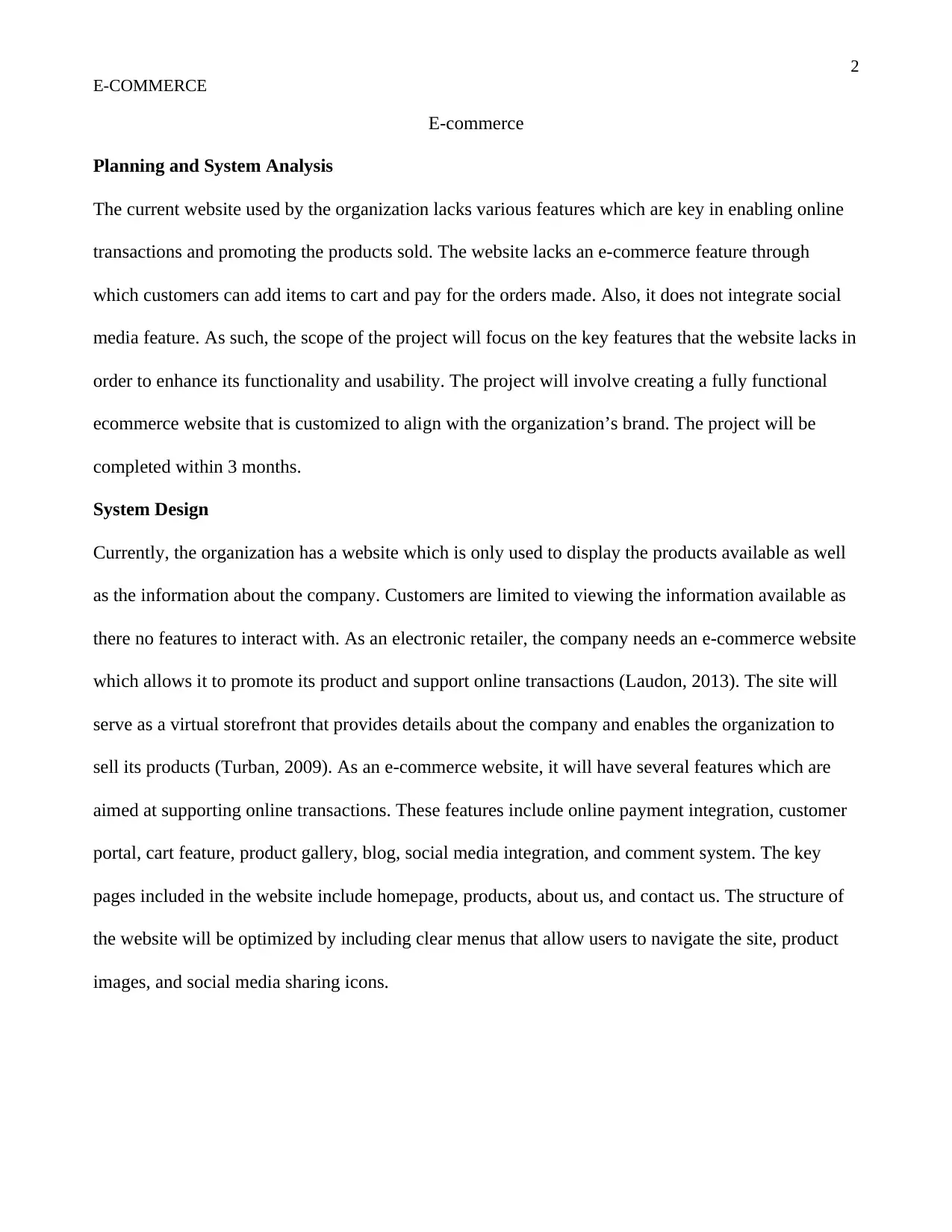E-commerce Website Development Project for Online Transactions
VerifiedAdded on 2019/10/30
|4
|712
|198
Project
AI Summary
This project outlines the development of a new e-commerce website for an organization, addressing the limitations of the current website. The project scope encompasses planning, system analysis, design, construction, testing, implementation, and marketing. The website's features include online payment integration, a customer portal, a shopping cart, product galleries, a blog, and social media integration. The project will be completed within three months, with phases for requirements gathering, design, development (front-end and back-end), testing, and deployment. The system testing plan includes unit and security tests. The project will be marketed through social media and email campaigns. This project provides a comprehensive plan for creating a functional e-commerce platform. This document is contributed by a student to be published on the website Desklib. Desklib is a platform which provides all the necessary AI based study tools for students.
1 out of 4











![[object Object]](/_next/static/media/star-bottom.7253800d.svg)